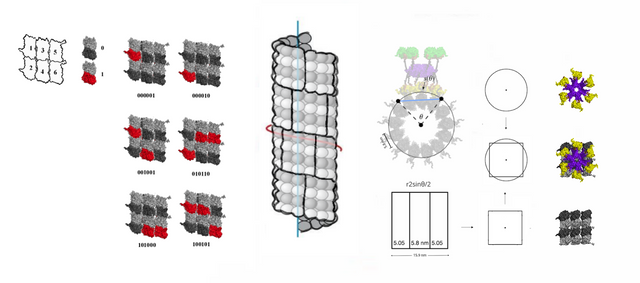Microtubules as append-only chronology machines
Microtubules seem to be able to have the analog equivalent of hash functions if they act as an append-only data structure that physically tethers new input to a position in the MT. With an append-only system, a single neuron could store a life history of whatever input it processes, a chronology of input from one pixel in the eye for example, and together neurons could re-create memories.
The spiraeum as a cellular state, similar to how the genome is a phylogenetic state
As an append-only system, microtubules would have the inherent capacity to store data with a notion of an arrow of time. Similar to how each cell stores the entire genome, 750 mb, they may also store a cellular state, in microtubule networks. Danko Georgiev estimates that there are 1.3×10^9 tubulin dimers in adult pyramidal neurons, and as a trinary system with three possible states per tubulin (0, 1 and 2), log2(3) * 1.3*10^9 = 256.75 mb.
With 10-100 trillion cells, even a tiny data storage capacity of 10 mb per cell, 5×10^7 tubulin dimers, is 10 mb * 10 trillion cells = 10 * 10^13 = 10^14 mb = 100 exabytes total cellular state size, compare to the Ethereum blockchain size which is currently 100 gigabyte, or 0.0000001 exabyte.

Synapses
Remarks on the number of tubulin dimers per neuron and implications for Hameroff-Penrose Orch OR (2009)
This is great publishing and great writing experience.